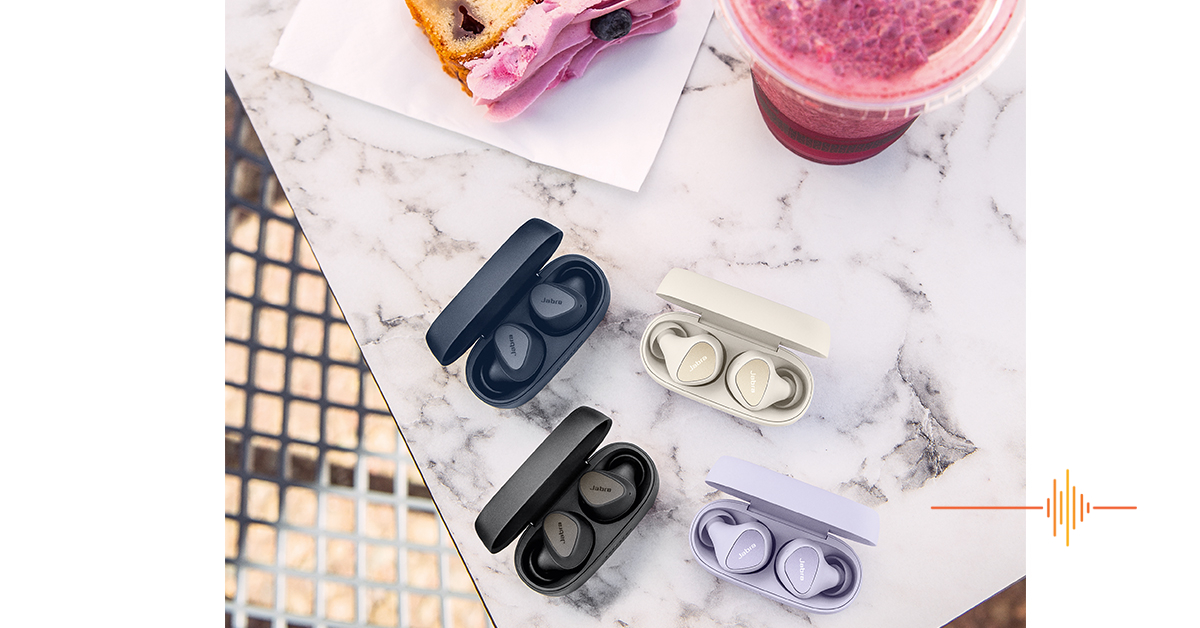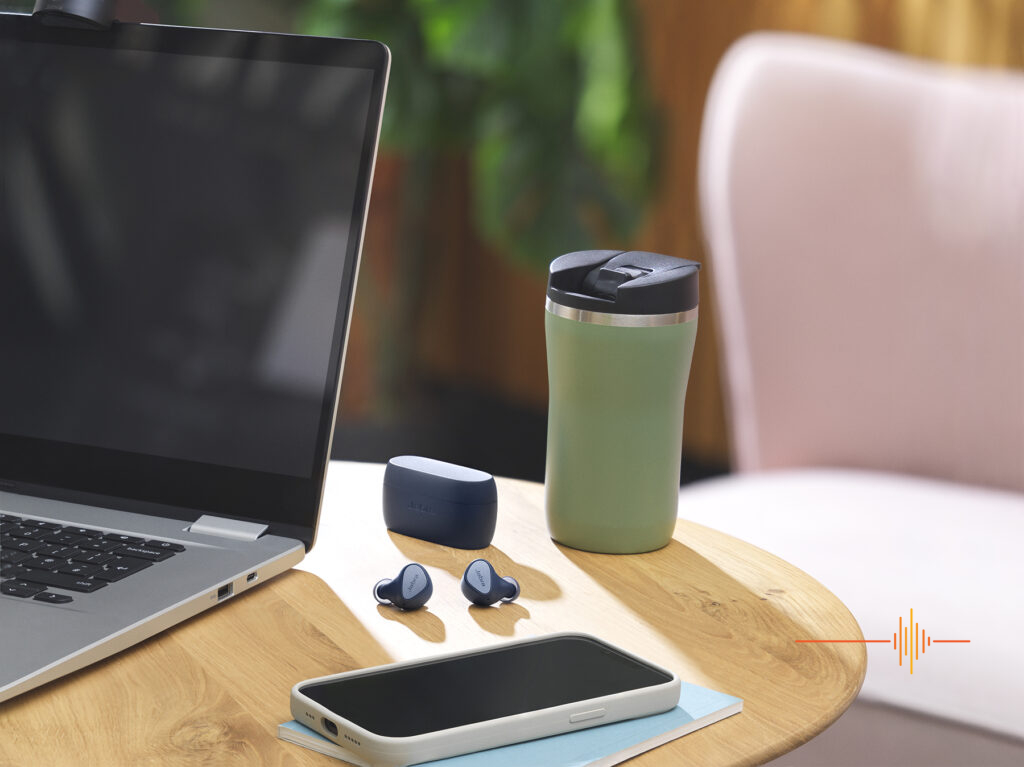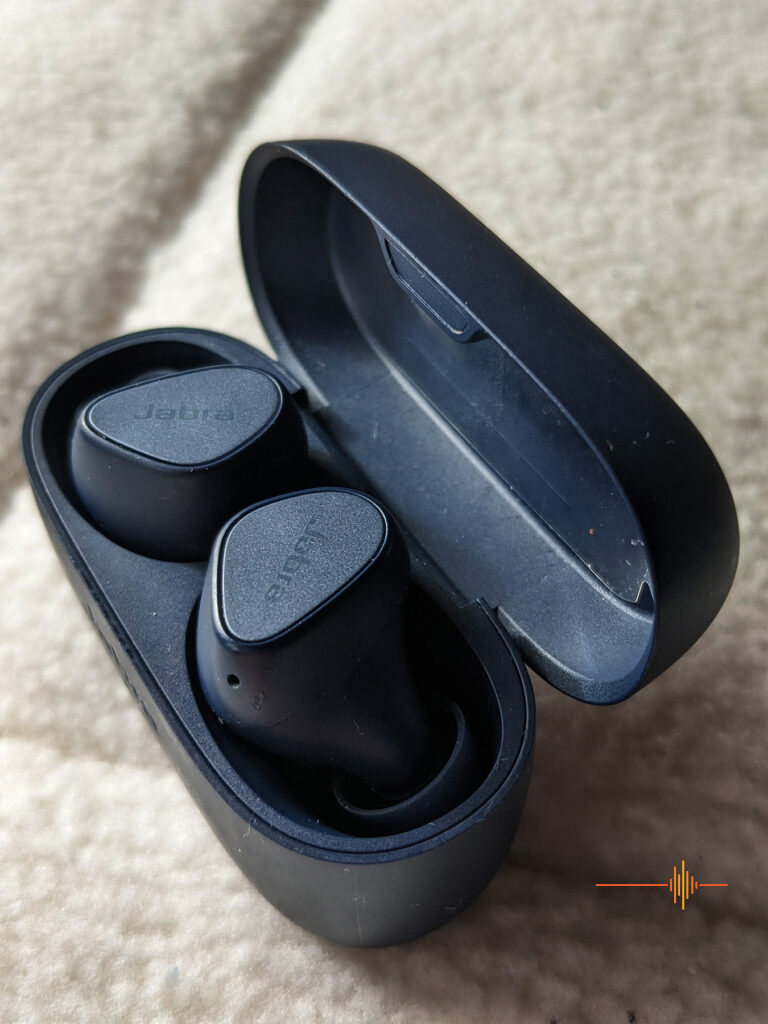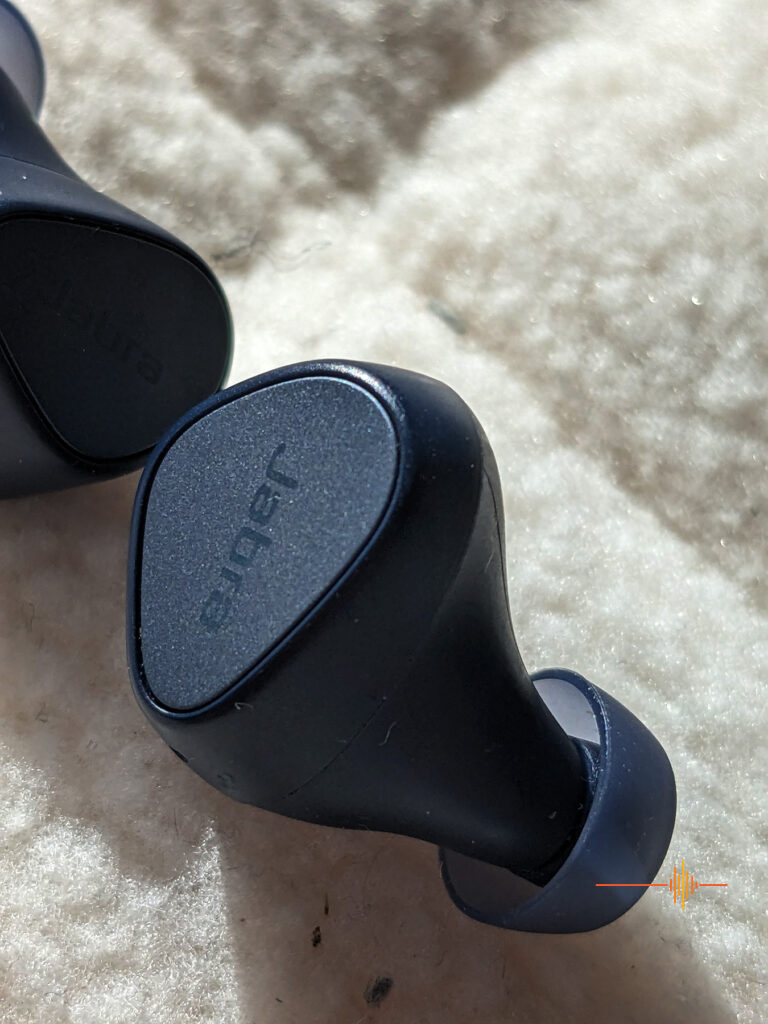About eighteen months ago, Lis reviewed and loved the Jabra Elite 3 so much that she spontaneously broke out into joyous Danish. Recently Jabra launch the successor, the Jabra Elite 4.
Following in the footsteps of the entry-level Elite 3, these are a step up from its predecessor designed for the modern earbud user. The marketing says “at the push of a button, users can escape from a busy day by immersing themselves in media or connecting with colleagues, friends or family.”
I have had these for a little while for testing. In an ideal world I would have had it reviewed under embargo and have my thoughts ready at launch day. Unfortunately life got in the way so there I am. Sorry Jabra!
First Impressions
The Elite 4 are in the lower end of the offerings from Jabra, and are the non-sporty cousin of the Elite 4 Active.
We got shipped the Navy Blue version and it is very blue. There is nothing particularly eye catching about them, with the Jabra True Wireless range all sharing the same design cues. The more recent offerings from Jabra are all mono colour without any highlights. Truth be known, I really miss the copper/black offerings they used to have.
The lowkey appearance is not a bad thing considering when I gave them to the teenager to try out. They didn’t attract any undue attention and are quite effectively hidden until his messy mop of hair.
The Elite 4 are small and lightweight, with each earbud only weighing in at 4.6g each. Even the case is smaller, especially in comparison to my Evolve2 Buds which needed to house a USB dongle.
Construction is all plastic, hardly a surprise at the price point, with a slight matte coating to finish it off.
Setup
I have reviewed so much Jabra gear that this is all muscle memory now. The great part is that it was never difficult to begin with. My teenager who is reasonably tech savvy took point with the testing and I never heard a peek of problems with the process.
What has been a fairly new move for Jabra is the tape over the contact when shipped from the factory. You have to remember to pull them off or they will not charge for love or money.
As always, having the Jabra Sounds+ app is essential to get the most out of your Elite 4s. Firmware updates and customising are all done through the app.
In the words of my teenager, he found the app to be very easy to setup and use. He could customise the features without having to tap on my shoulder for help.
In Use
The main problem I had was that the initial review pair failed after a few weeks, with the right earbud stopped working and nothing could coax it back to life. Thankfully Jabra replaced them quickly and the issue hasn’t reappear despite extended testing.
The most important things to the teenager is the sound quality and comfort. The child lives on a diet of music. Despite the 6mm driver in the buds, Jett has actually reported very good sound quality. Confiscating them for my own tests, I was pleasantly surprised at the bass. It was no slouch with the mid and highs, managing to retain clarity and crispness in the high frequencies.
The Elite 4 supports aptX and SBC codecs, which makes it more biased to Android users (which we are in this house). There is no support for AAC which makes it less appealing to Apple users.
The big thumbs up though, from the teenager is the comfort level. His previous set of buds tends to hurt his ears after an hour and boy do I get to hear all about it. With the Elite 4, he is going for as long as the battery can hold out. Perfect for a day at school, off to the library to study and then hit the gym.
With just a single button on each bud, it is going to take some use to remember the functions. The Sounds+ app allows for some customisation. However the teenager has taken to it like a duck to water. It just goes to show how easy it is to get used to it.
Noise cancelling is a bit hit and miss. The passive noise cancelling is great as long as you seat the buds correctly.
Active noise cancelling is almost barely there. We couldn’t really discern a significant difference with ANC on or off.
Voice reproduction is decent, although it tends to pick up a lot of background noise and does not always filter it out. Holding a conversation feels a little elusive with the Elite 4 sounding a bit distant.
The Elite 4 also has Bluetooth Multipoint out of the box, allowing for two concurrent device connections. You can pair with up to 6 devices.
Battery Life
Each charge is rated for 5.5 hours run time with ANC on. The teenager reports that this is fairly accurate.
With ANC turned off, we are looking at around 7 hours run time which is also fairly accurate.
A full charge of bud and case is rated for 22 hours with ANC on, or 28 hours with ANC off. This is more than enough to keep the teenager happy for the day.
Charging is via USB-C only, no wireless charger on this one. A 10 minutes charge up gives up to an hour of playback time.
You can etch out a little more play time with the buds by using them in solo mode.
Gripes
Bearing in mind that the Elite 4 is on the lower end of the scale, compromises are made.
The ANC and microphone pick ups are definitely the weakness in the armour here.
Conclusions
The Jabra Elite 4’s strengths are their comfort level and battery life. Both of these are valued highly by my music mad teenager. Who can fault him though, when he needs to get through school, study, gym and work?
The weakness is definitely in the Active Noise Cancelling, and something had to give to get the price down. The conversation capabilities are not ideal, but given teenagers mostly text and grunt, it wasn’t high on his list of priorities.
The Jabra Elite 4 come in Gray, Light Beige, Lilac and Navy Blue options with a RRP of AUD$139.00. The dark grey is a little cheaper on Amazon at the time of publishing. At this price point, it is certainly a lot less painful when he loses one bud.
DRN would like to thank Jabra for providing the review unit.
Specifications
Active Noise-Cancellation (ANC): Yes
Microphone type: 4 x MEMS
Microphone bandwidth: 100Hz – 8000Hz
HearThrough: Yes
In-ear pressure relief: Yes
Speaker size: 6mm | 0.236in
Speaker bandwidth (music mode): 20Hz – 20000Hz
Speaker bandwidth (speak mode): 100Hz – 8000Hz
Audio codecs supported: Qualcomm aptX, SBC
Connectivity: Bluetooth
Bluetooth version: 5.2
Bluetooth profiles: A2DP v1.3, AVRCP v1.6, HFP v1.8, HSP v1.2
Operating range (Bluetooth): Up to 10m | 33ft
Paired devices: Up to 6 Bluetooth devices
Bluetooth Multipoint: Yes
Auto power on/off: “ON” when earbuds are out of charging case; “OFF” after 15 minutes without connection or 30 minutes without activity






